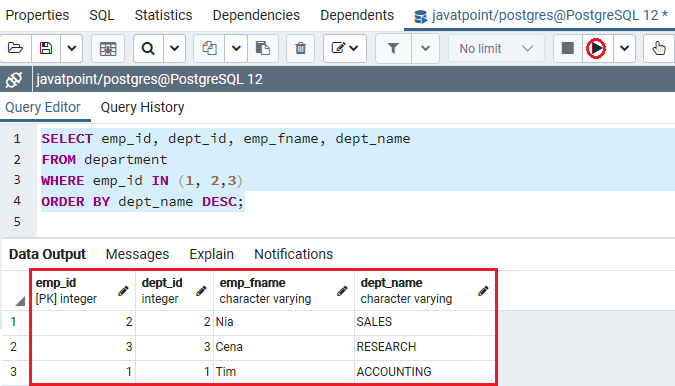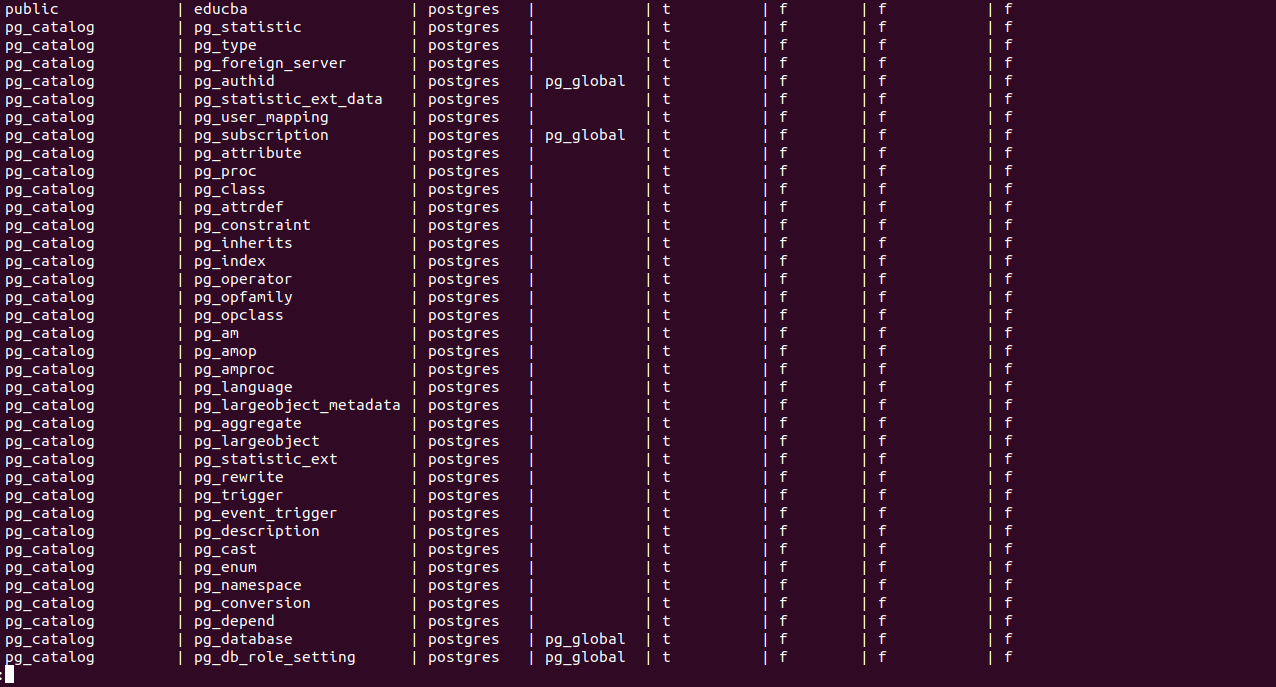
- #Postgresql commands see tables how to#
- #Postgresql commands see tables update#
- #Postgresql commands see tables full#
#Postgresql commands see tables how to#
In this section, I’ll talk about how to get database metadata, get the name of the database owner, and extract statistical information about the database, like the number of transactions.

Investigate the data types of columns that have problems in your tables.Be informed of the tables that have no indexes so you can fix performance issues.

#Postgresql commands see tables full#
Investigate the number of full scans, index scans, etc.List all tables in the PostgreSQL cluster.Extract the number of transactions committed to the database.To name a few use cases, you can do the following: Getting PostgreSQL metadata can help you have information about databases, tables, schema, indexes, columns, functions, and even size information. This is useful, especially if the record length is long. One pro tip on CoderPad sandbox is to head over to the right terminal and run this to prettify the output of the SQL command: You can also use CoderPad’s sandbox, which uses PostgreSQL 12. Getting started: Prerequisitiesįollowing this tutorial, you’ll need to write SQL commands in your desired SQL client. Each column starts with “con” except for the oid column, which is the row identifier. These kinds of objects are referred to as “relations”.Ī typical example is a pg_constraint catalog, which stores primary, unique, and foreign keys and table constraints. This is because the pg_class catalog stores all information about tables and other objects that have columns. pg_namespace, which has columns that begin with “nsp”.Īnother interesting example is pg_class, which has columns that start with “rel”.pg_proc, which has columns that start with “pro”.For example, the pg_database has columns starting with “dat”, like datname, which is the database name column. A high percentage of columns – if not all – have a prefix of a combination of three letters of the name after “pg_”. PostgreSQL has some funny naming conventions for the column names of system catalogs. However, most system catalogs are database-specific.Įach system catalog name starts with “pg_”. So you shouldn’t change the system catalogs unless you really know what you’re doing.Ī few system catalogs are shared across all databases in the PostgreSQL cluster.
#Postgresql commands see tables update#
You can insert new rows, update values, add columns – or potentially mess up your system.


These catalogs are regular tables where you can manipulate data as you do with other tables. System catalogs are where a database management system stores schema metadata, such as information about databases, tables, and columns. Each catalog is a collection of schemas, and each schema has a set of tables. When you set up PostgreSQL in your machine, you spin up a PostgreSQL cluster, a server that hosts databases. This tutorial aims to give you insights into how PostgreSQL system catalogs can help you manage your schemas, databases, tables, and even table columns. In this tutorial, you’ll learn about the internal building blocks of PostgreSQL – also known as system catalogs – to see how the PostgreSQL backend is structured. Please reach out to David on our slack to discuss what you want to contribute.ĭata School wants a comprehensive post to help people show their tables in Postgres.PostgreSQL is a well-known database engine that allows you to write performant SQL queries. Share your story about working through this problem at work.We are looking for two types of contributions:


 0 kommentar(er)
0 kommentar(er)
